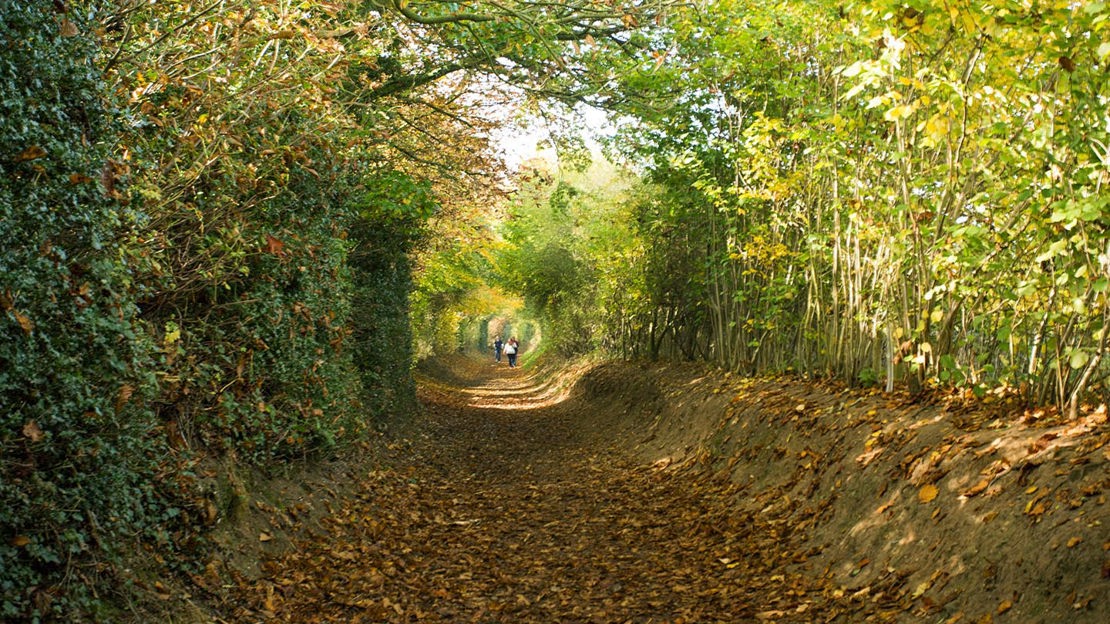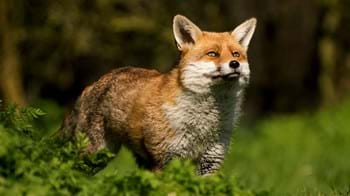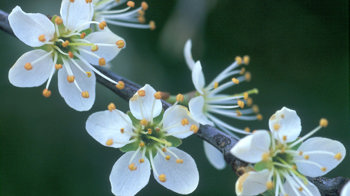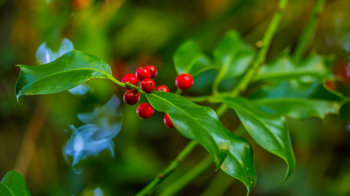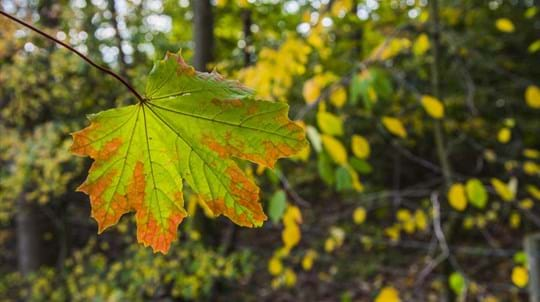
Heartwood Forest
Sandridge

Woodland Trust wood
346.72 ha (856.75 acres)
TL162114
Explorer 182
OS Landranger 166
Heartwood Forest is an extraordinary and special place that has transformed a vast area of former farmland in London’s greenbelt.
Thanks to tens of thousands of volunteers, over half a million trees have been planted and meadows have been sown. Heartwood Forest has become England’s largest planted native woodland, and wildlife is now booming here. Although Heartwood Forest is still young, its special mix of connected habitats – rare ancient woodland, wildflower meadow, orchard, hedgerow, grassland and new woods – makes it one of our top sites.
Features
- Parking at site
- Parking nearby
- Public access
- Spring flowers
- Waymarked walk
- Grassland
- Broadleaved woodland
How to get to Heartwood Forest
Heartwood Forest (347 hectares/857.5 acres) is 4.8km (3 miles) north of St Albans in Hertfordshire and only 32km (20 miles) from central London. It lies on either side of the B651, between Harpenden, Wheathampstead and Sandridge.
From St Albans, head northeast on the B651 and after 4km you will see a brown tourist sign pointing towards the car park from the main road.
There is a good train service to St Albans station, 4km (2.5 miles) from Heartwood Forest.
Visit National Rail for information.
There are two bus services which stop at Sandridge village: one from Hitchin to Potters Bar (via St Albans) and one from Hemel Hempstead to Hatfield (via Harpenden).
The nearest bus stop is outside Pound Farm, opposite St Leonard’s Church. Walk through the farmyard and up the bridleway to reach Heartwood Forest.
Visit Traveline for more information.
There are several good cycle approaches to Heartwood Forest from each major village and town.
Please take care if using the B651. The road is narrow, winding and busy.
There are eight bike stands for locking bikes in the car park.
Facilities and access
Heartwood Forest is close to St Albans, on either side of the B651 between Sandridge and Wheathampstead village.
At 347 hectares (857.5 acres), there are several entrances to the forest, all linking to either bridleways, public or permissive footpaths. If you’re visiting Heartwood Forest for the first time, use the main car park entrance where you’ll find information boards and a site map.
There is a network of paths in Heartwood Forest including a public footpath and two bridleways. Most of the paths are unsurfaced and can get muddy when wet. There are some moderate gradients leading up from Sandridge village. There is a short surfaced all-access loop from the car park. A DDA-compliant path runs through the magical wood and forms part of the magical meander trail.
The car park surface is tarmac track with stoned parking spaces. An overflow car park is used on an ad hoc basis for events and exceptionally busy days. This is flat but the surface is grassed and can become muddy or waterlogged in wet weather.
There are eight bike stands in front of the visitor welcome and information point.
The Heartwood Forest car park is located off the B651, which runs from Sandridge to Wheathampstead.
There are 55 parking spaces available, five of which are reserved for blue badge holders. These are clearly marked with a blue badge logo. There are no time restrictions during opening hours on visitor parking here.
The car park is open from 8am all year round, but closing times vary depending on the time of year. Car park opening times: 1 January–29 February 8am-5pm, 1 March–30 March 8am-6pm, 31 March–30 September 8am-8pm, 1 October–27 October 8am-7pm, 28 October–31 December 8am-5pm.
The nearest public toilets to Heartwood Forest are at Sandridge Village Hall.
Wildlife and habitats
Animals
Look up to the skies at Heartwood and you may catch a glimpse of a rare and special bird. In fact, the total number of birds recorded here in the Breeding Birds Survey has more than doubled in recent years. Farmland species and birds of prey in particular are a common sight. These include skylarks and meadow pipits, as well as some breeding willow warblers, a scarce species for Hertfordshire. Since 2012, 19 kestrel chicks and 60 barn owlets have been ringed in Heartwood boxes. Other rare birds such as the great grey shrike have also been spotted here, as well as hen harrier, grasshopper warbler and hawfinch.
Butterfly numbers have seen a three-fold increase here since we took on the site. We now have significant populations of the rare small blue and purple emperor, and small heath and marbled white butterfly numbers have blossomed.
Regular bat monitoring at Heartwood has revealed eight species of bat using the site, including the rare barbastelle. Small mammals such as yellow-necked and harvest mice also make their home here.
Heartwood is also one of only three sites in Hertfordshire to have stripe-winged grasshoppers. And although non-native, and generally well known to the south of England, the exotic-looking wasp spider was spotted here for the very first time in 2015.
Trees, plants and fungi
With a community orchard, an arboretum containing all 60 native tree species, precious ancient woodland and wildflower meadows, Heartwood Forest is rich in plant species. Over 200 species of flowering plant have been recorded here in all, with common spotted and pyramidal orchids beginning to appear all over the site.
Every spring, the floor of the ancient woodland is carpeted by a mass of fragrant bluebells, as well as the delicate blooms of wood anemone and yellow celandine. These fragile wildflowers are sensitive to trampling – help them to thrive by sticking to wide paths when exploring the site.
You can also spot mighty oak, hornbeam, ash, field maple, hazel, hawthorn and birch trees in all seasons.
Habitats
Heartwood Forest is made up of four woods: Langley Wood, Pismire Spring, Well and Pudler’s Wood and Round Wood.
With pockets of ancient semi-natural woodland, wildflower meadows, hedgerows, a community orchard, open grassland and an arboretum, Heartwood Forest is a wonderfully eclectic mix of habitats.
Visit between May and August to admire the wildflower meadows ablaze with colourful blooms.
About Heartwood Forest
While Heartwood Forest is a young wood, it has a rich history.
Acquisition
We acquired the 347 hectares (850 acres) of arable farmland on 30 September 2008, almost all of which was being farmed commercially with arable crops.
We started planting with the help of thousands of volunteers and school children. Three-quarters of the site is now covered with 600,000 native trees, all sourced in Britain. There are also areas of open space in the grasslands and wildflower meadows.
Community orchard and arboretum
In the southeast corner of Heartwood Forest, local children have begun planting 600 fruit trees to create a vibrant community orchard. Providing a valuable habitat for pollinators and other wildlife, the orchard features many old Hertfordshire varieties of apple, pear, cherry, as well as plum, medlar, apricot and quince. This fruit will be used locally and sold to help care for the orchard.
An especially unique feature of Heartwood Forest is the arboretum. It's the only one known in the UK to contain all 60 of our native tree species, which over the centuries have been used to make everything from furniture and charcoal to medicine and musical instruments. The arboretum pays tribute to their historical, cultural and ecological value.

Credit: Judith Parry / WTML
Archaeology
Archaeological investigations at Heartwood Forest revealed features such as depressions (possibly old pits), potential old tracks and internal banks. These, together with significant buried remains, suggest human activity from the prehistoric period onwards.
Trenches also showed evidence of late Iron Age and Romano-British activity.

Your support matters
This wood was secured for the future thanks to your response to an urgent appeal. Discover how you helped us bring another incredible place safely under our wing, and what the future holds for Heartwood Forest.
See what we've achievedThings to do at Heartwood Forest
Walking
As Heartwood Forest covers such a large expanse with a range of habitats, it is a brilliant place for a long and interesting walk. There are three way-marked trails which run in and around Heartwood Forest. From wildlife wanders in the ancient woodland to magical meanders through the Magical Wood, a walk around this natural haven is well worth it.
Download the Heartwood walking map.
Horse riding
Horses are welcome on both public and permissive bridleways that are clearly signed throughout Heartwood Forest. To avoid damage to the ground and plants, please stick to bridleways and avoid waterlogged paths to help prevent erosion or widening.
Horses are not permitted on footpaths, including the permissive paths through the ancient woodland. Please ride with care because bridleways are also used by pedestrians and cyclists.
Cycling
Bicycles are welcomed on the public and permissive bridleways at Heartwood Forest, while the footpaths are for pedestrian use only. Bridleways and footpaths are clearly signed throughout the site.
As with any wood, there may be muddy paths or steep slopes around the site, so check the weather conditions before you visit and bring appropriate clothing and footwear.

A lasting legacy
This wood is just one of many to have been protected by gifts in wills, securing it for generations to come. Your legacy gift could also make a real difference to woods, trees and wildlife.
Learn what your gift could mean




